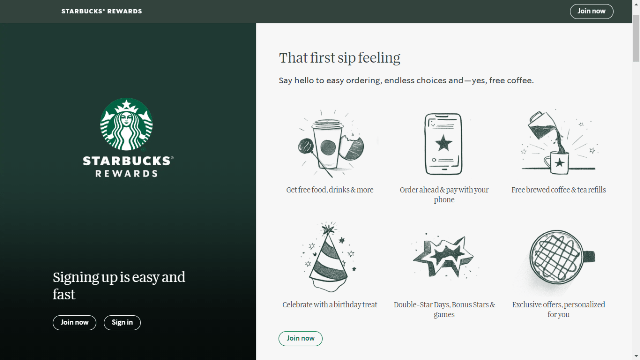
Essential Guide To Improve Customer Satisfaction & Retention
Keeping your existing customers happy should always be a priority for every single business.
Satisfied customers will always come back. Customer satisfaction hugely increases the chances of a customer returning to do more business.
In this article, I’m going to look at seven practical ways in which you can improve and streamline your current client management processes.
Let’s dive in.
1. Pick the Right Client Management Software
Client management software programs are a godsend for small businesses. You can use them to automate routine tasks, create online client portals for scheduling appointments, send and keep track of invoices, meetings, and more.
Pick a provider that creates dedicated client management software for small businesses, not an enterprise solution.
One of the big pitfalls that many SMBs fall into is that they opt for a complex software application that has an extensive and complex feature-set and is virtually impossible for staff to use.
What’s more, enterprise-level solutions are quite expensive. On the other hand, software solutions designed for small businesses will set you back as little as ten or twenty bucks a month.
2. Outsource and Automate Customer Support
Fast, accurate support leads to happier, more loyal customers, while shoddy support unsurprisingly has the opposite effect.
So how can small businesses that operate during specific opening hours, and where resources are likely already stretched, offer high levels of support?
Two specific solutions are available: Automation and Outsourcing.
You can leverage third-party services, for example, when you’re not in the office, such as outsourced 24/7 technical support.
It’s also a good practice to use inexpensive but effective automation technologies like auto-generated email responses and AI chatbots, which enable companies to communicate with customers directly through messaging services like WhatsApp and Facebook Messenger without the need for direct human interaction
3. Provide Regular and Straightforward Updates
You should keep your customers updated about everything: deliveries, new product lines, upcoming appointments, changes in opening times, and so on.
It’s good practice to adopt a multi-channel approach initially, testing which communication methods and content strategies work best and leveraging them in the future.
Where appropriate, aim to reach customers through a mix of channels, whether email, social media, app notifications, or even SMS.
Often, with straightforward updates about things like deliveries and appointments, around two or three notifications is the sweet spot.
4. Run a Loyalty Program
Many small and medium-sized businesses are dubious about whether or not loyalty programs work anymore. And this is a valid concern. Many big brands are getting rid of loyalty programs in favor of simply passing savings directly onto customers.
A recent study, however, suggests that loyalty programs can lead to repeat purchases.
An in-house loyalty program can help to engage clients on a consistent basis while driving repeat business.
Image via Starbucks
There are numerous apps for SMBs that will enable you to run a loyalty program online. And if you don’t want to manage an overly-complex scheme, you can always opt for a simple coffee-shop-style stamp card, just like Starbucks.
5. Make Use of Multiple Video Conferencing Apps
This is a simple but important point. Most small businesses will need to use video messaging or teleconferencing software at some point, whether to speak to clients or business associates.
Assuming that both parties actually manage to begin the call, the familiar routine of struggling to turn on muted microphones and figure out blank screens is frustrating and time-consuming, especially for clients.
That’s why you should familiarize yourself with a range of video conferencing tools and let clients opt for the one they’re most familiar with.
Don’t make them install a new app just to hop on a call with you. Your desktop should be filled with little icons – Skype, Google Hangouts, GoToMeeting, Zoom, and more.
6. Be Careful About Over-Delivering on Client Management Tasks
It’s common to hear the advice, “You should over-deliver.” But is this a good aim to have?
In one notable study, the old dictum “underpromise and overdeliver” was put to the test.
The results?
Following this age-old advice resulted in virtually no business advantage compared to keeping original promises.
Consistently over-delivering will likely raise client expectations. And your extra output can be difficult to sustain in the future. Furthermore, clients rarely expect you to go above and beyond, which means that you’re expending resources for virtually no additional benefits.
By over-performing, you’re not only wasting effort and resources, but you’re also setting a benchmark that clients will expect in the future, which may well lead to unmet expectations. Be clear about your promises, but don’t make a habit out of exceeding them.
7. Set Clear Performance Goals On an Ongoing Basis
If your company is based on recurring income from clients, it’s essential to establish clear outcomes and performance criteria at the outset of any new relationship.
Most business owners and reps understand this. Things can often go awry further into the relationship as customer needs gradually change. Very often, new demands will emerge and the company’s approach will shift accordingly, but without clarifying these commitments and associated goals accordingly.
That’s why it’s vital to implement processes for the constant re-evaluation of client goals. When you’re consistently updating client requirements, and adjusting your approach, your work is much more likely to lead to satisfaction.
Trending
-
1 SEO Mistakes That Could Be Costing Your Shopify Store Sales
Daniel Hall -
2 Strategies for Safeguarding Assets and Investments
Daniel Hall -
3 The Role of PR Firms in Crisis Management and Damage Control
Nitish Mathur -
4 How to Make Appealing Visuals for Your E-commerce Store
Daniel Hall -
5 The Competitive Landscape of Low-Cost Carriers in Belgium: TUI Fly Belgium’s Position
Daniel Hall






Comments